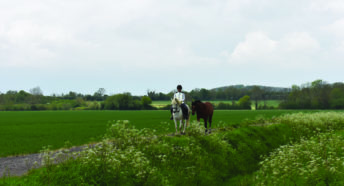Who’s who in the Oxford-Cambridge Arc?
The OxCam Arc is a large multi-regional project with lots of bodies involved in its development. In this explainer we delve into who’s who, decode all those abbreviations and the roles they play.
Oxford to Cambridge Partnership (PRP)
They say: “This new Partnership brings together leaders from local government, Local Enterprise Partnerships, the Arc Universities Group and England’s Economic Heartland, as the area’s sub-national transport body, to help coordinate and collaborate on agreed regional-scale priority programmes and projects that add value to communities, businesses and the environment.”
The PRP now has its own website and they explain the current status of the group like this:
“As we work towards appointing our formal Board, a Shadow Board is overseeing our initial programme, and will agree governance and funding arrangements. Cherwell District Council is the accountable body for the Partnership, responsible for administering finance, procurement and resources management.”
The website contains details about the make-up of the Shadow Board, and information about meetings. There are two subgroups: environment and economy. Information about their work can also be found on the website.

Local Enterprise Partnerships (LEPs)
LEPs are non-statutory bodies responsible for local economic development in England. LEPs are the one forum where developers and businesses are represented and are given an opportunity to work with Local Authorities to shape priorities and the direction of travel.
SEMLEP
SEMLEP is the South East Midlands Local Enterprise Partnership.
SEMLEP describe their role as helping “economic growth thrive across the South East Midlands. Steered by a business-led Board, we work to build a strong economy by tackling barriers to sustainable growth and supporting job creation for the future prosperity of communities across the South East Midlands.”

Growth Boards
Growth Boards are formed to enable local authorities to work together in a defined local area to promote closer collaboration and strategic leadership on regional economic growth, spatial planning and wider environmental matters. There are three Growth Boards, or equivalent bodies, that have been established in the Oxford to Cambridge area.
- The Central Area Growth Board (CAGB), which consists of the six local authorities within the South East Midlands Local Enterprise Partnership (SEMLEP). These are Luton, Bedford, Central Bedfordshire, Milton Keynes, West Northamptonshire and North Northamptonshire, and also includes the local enterprise partnership.
- The Growth Board in Oxfordshire is called the Future Oxfordshire Partnership, a joint committee of the six councils of Oxfordshire together with key strategic partners, including Oxfordshire LEP working together to deliver a better future for the county.
- Local Authorities in the ceremonial county of Cambridgeshire have formed the Cambridgeshire & Peterborough Combined Authority, a Mayoral Combined Authority for the Cambridgeshire and Peterborough area. The combined authority carry out the functions of a Growth Board but it is a very different set up than Growth Boards as they are one authority led by an elected Mayor.
The Growth Boards are all represented on the Oxford to Cambridge Pan Regional Partnership.

England’s Economic Heartland (EEH)
EEH is one of seven sub‑national transport bodies, jointly funded by the Department for Transport and local authority partners.
They describe their role as:
“Stretching from Swindon to Cambridgeshire and from Northamptonshire to Hertfordshire, England’s Economic Heartland brings political and business leaders together to realise the region’s economic potential while working towards net-zero.
England’s Economic Heartland is at the forefront of planning and promoting the transport infrastructure and policy framework required to realise our region’s economic potential while reducing the transport system’s impact on the environment.”
In September 2021 EEH’s two political-level meetings – the Strategic Transport Forum and EEH Leaders Group meeting – were consolidated into a single meeting, provisionally titled the ‘Strategic Transport Leadership Board’. More information and meeting papers are available on their website.

EEH is one of seven sub‑national transport bodies.
ARC Universities Group (AUG)
The group brings together universities across the OxCam Arc.
They say: “By linking innovation districts and collaboration between public and private sector partners, the Arc will become a place in which world leading research can flourish.”

East West Rail Company (EWR Co)
East West Rail is a major infrastructure project designed to connect Oxford and Cambridge.
EWR Co explain their role as:
“In 2018, the Department for Transport created the East West Railway Company – our Company – to look at plans being developed for a new railway between Oxford and Cambridge. The original plans were developed by the Department for Transport, Network Rail and the East West Rail Alliance. Our job is to consider and challenge these plans with fresh thinking. To do that, we are now responsible for planning the section of East West Rail between Bletchley and Cambridge, while overseeing delivery of the section between Bicester and Bletchley – which is being delivered by the East West Rail Alliance.”
- Department for Transport
- Network Rail
- East West Rail Alliance – The East West Rail Alliance was procured by Network Rail to construct the section of East West Rail between Bicester and Bletchley, and is made up of Network Rail, Atkins, Laing O’Rourke and VolkerRail.
- East West Main Line Partnership (previously known as East West Rail Consortium) “consists of local authorities which share the ambition for a strategic railway connecting East Anglia with central, southern and western England and into southern Wales. Its technical work over the years has been pivotal in making the strategic case for East West Rail.”









